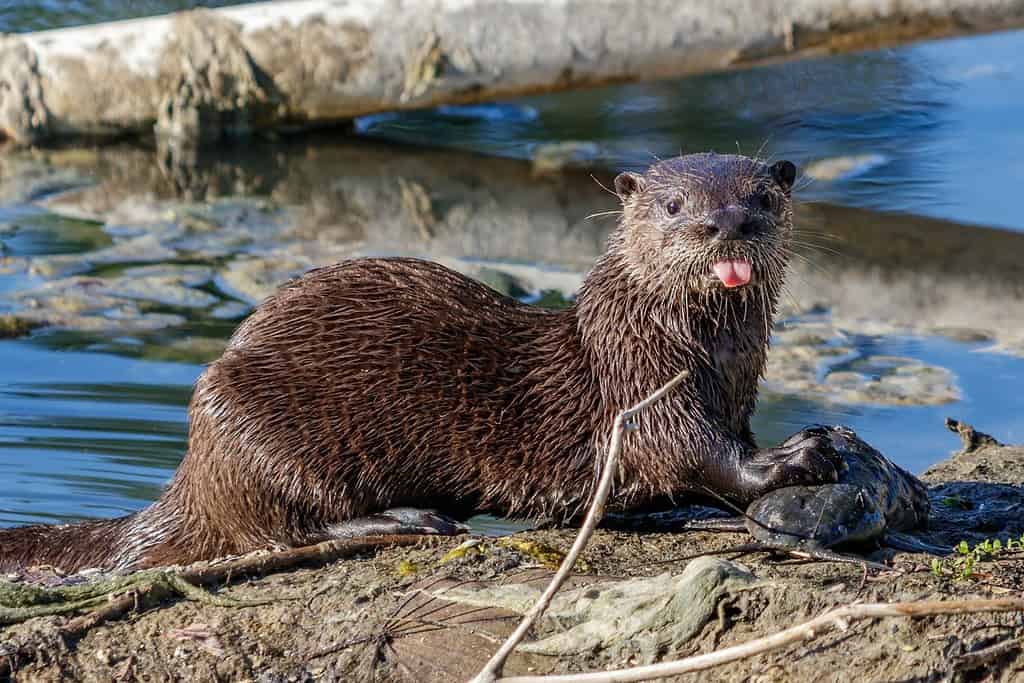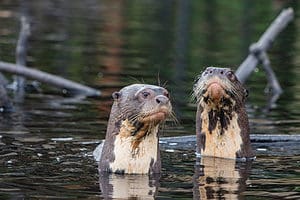These otters have a thing or two to teach humans about overcoming challenges and teamwork. Their challenge is to get up a high wall – and with a little help from their friends, most of them manage it. One, however, is left behind! But the others do not run off and leave their buddy. They all come back and lean over the wall, trying to figure out how they will get the final otter over it. After leaping around a lot, one of them manages to grasp the loose skin of the stranded otter’s neck in their mouth and haul them up. Phew!
Watch the Incredible Feat Now
©Protasov AN/Shutterstock.com
How Many Types of Otters Are There?
Otters are mammals in the Mustelidae family and are related to weasels. They have a slim, short body with a muscular neck and a long, tapered tail. These guys also have webbed feet for swimming and soft, thick, double-layered fur to keep them dry when they are in the water. There are 13 different species worldwide. These include the Asian small-clawed otter, which is native to South China, India, and Southeast Asia, and the spotted neck otter, which is native to central Africa. The North American otter is well-known.
Where Are American Otters Normally Found?

River otters are usually near water.
©Microfile.org/Shutterstock.com
North American river otters are throughout Canada and the US, with a few notable exceptions. They are not in southern California, New Mexico, or Texas. They also do not live in the Mohave desert of Nevada and Colorado.
Habitats with plenty of food and easy access to water are where you are most likely to spot these otters. Even though they are mainly found in freshwater, they can also live in coastal marine habitats, including lakes, marshes, and estuaries. They are robust little animals who can cope with both heat and cold and can live at high elevations.
How Do River Otters Normally Behave?
As you can see in this clip, otters can live in family groups, but some choose to live alone. A typical family group is a mother with her young. Otters have a lot of fun! They are often spotted ‘playing,’ including sliding on snow and messing about in the water. Some experts think that these activities help to strengthen social bonds. This clip shows that they also look out for each other when climbing walls!
The photo featured at the top of this post is © iStock.com/Artush
Thank you for reading! Have some feedback for us? Contact the AZ Animals editorial team.






